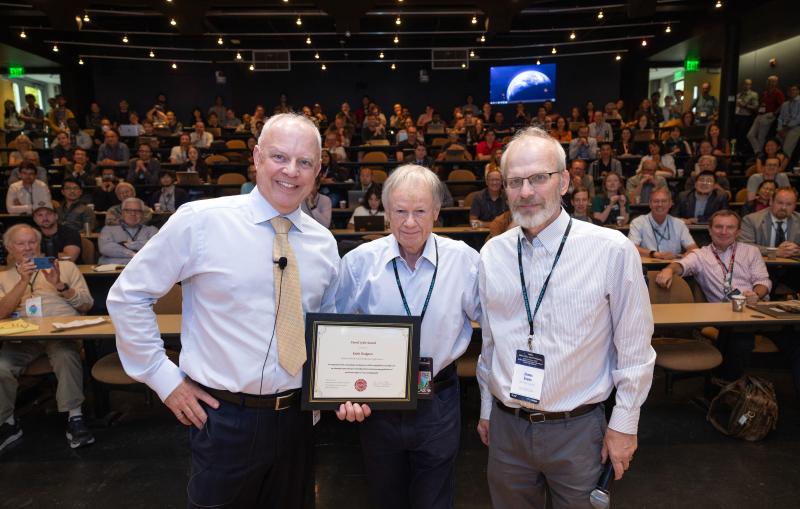Researchers show how electric fields affect a molecular twist within light-sensitive proteins
A better understanding of this phenomenon, which is crucial to many processes that occur in biological systems and materials, could enable researchers to develop light-sensitive proteins for areas such as biological imaging and optogenetics.
By Ali Sundermier
A team of scientists from the Department of Energy’s SLAC National Accelerator Laboratory and Stanford University has gained insight into how electric fields affect the way energy from light drives molecular motion and transformation in a protein commonly used in biological imaging. A better understanding of this phenomenon, which is crucial to many processes that occur in biological systems and materials, could enable researchers to finely tune a system’s properties to harness these effects, for instance using light to control neurons in the brain. Their findings were published in Science in January.
Twist and shout
Human vision, photosynthesis and other natural processes harvest light with proteins that contain molecules known as chromophores, many of which twist when light hits them. The hallmark of this twisting motion, called photoisomerization, is that part of the molecule rotates around a particular chemical bond.

“Something about the protein environment is steering this very specific and important process,” says Steven Boxer, a biophysical chemist and Stanford professor who oversaw the research. “One possibility is that the distribution of atoms in the molecular space blocks or allows rotation about each chemical bond, known as the steric effect. An alternative has to do with the idea that when molecules with double bonds are excited, there is a separation of charge, and so the surrounding electric fields might favor the rotation of one bond over another. This is called the electrostatic effect.”
A different tune
To find out more about this process, the researchers looked at green fluorescent protein, a protein frequently used in biological imaging whose chromophore can respond to light in a number of ways that are sensitive to its local environment within the protein, producing fluorescent light of various colors and intensities.
Stanford graduate students Matt Romei and Chi-Yun Lin, who led the study, tuned the electronic properties of the chromophore within the protein by introducing chemical groups that systematically added or subtracted electrons from the chromophore to engineer an electric field effect. Then they measured how this affected the chromophore’s twisting motion.
With the help of coauthor Irimpan Mathews, a scientist at SLAC’s Stanford Synchrotron Radiation Lightsource (SSRL), the researchers used an X-ray technique called macromolecular crystallography at SSRL beamlines 7-1, 12-2 and 14-1 to map the structures of these tuned proteins to show that these changes had little effect on the atomic structure of the chromophore and surrounding protein. Then, using a combination of techniques, they were able to measure how changes to the chromophore’s electron distribution affected where rotation occurred when it was hit by light.
“Until now, most of the research on photoisomerization in this particular protein has been either theoretical or focused on the steric effect,” Romei says. “This research is one of the first to investigate the phenomenon experimentally and show the importance of the electrostatic effect. Once we plotted the data, we saw these really nice trends that suggest that tuning the chromophore’s electronic properties has a huge impact on its bond isomerization properties.”
Honing tools
These results also suggest ways to design light-sensitive proteins by manipulating the environment around the chromophore. Lin adds that this same experimental approach could be used to study and control the electrostatic effect in many other systems.
“We're trying to figure out the principle that controls this process,” Lin says. “Using what we learn, we hope to apply these concepts to develop better tools in fields such as optogenetics, where you can selectively manipulate nerves to lead to certain functions in the brain.”
Boxer adds that the idea that the organized electric fields within proteins are important for many biological functions is an emerging concept that could be of interest to a broad audience.
“Much of the work in our lab focuses on developing methods to measure these fields and connect them with function such as enzymatic catalysis,” he says, “and we now see that photoisomerization fits into this framework.”
This work was funded in part by the National Institutes of Health (NIH). SSRL is a DOE Office of Science user facility. The SSRL Structural Molecular Biology Program is supported by the NIH and the DOE Office of Biological and Environmental Research. Part of this work was performed at the Stanford Nano Shared Facilities and supported by the National Science Foundation.
Citation: M.G. Romei et al., Science, 3 January 2020 (10.1126/science.aax1898)
Contact
For questions or comments, contact the SLAC Office of Communications at communications@slac.stanford.edu.
SLAC is a vibrant multiprogram laboratory that explores how the universe works at the biggest, smallest and fastest scales and invents powerful tools used by scientists around the globe. With research spanning particle physics, astrophysics and cosmology, materials, chemistry, bio- and energy sciences and scientific computing, we help solve real-world problems and advance the interests of the nation.
SLAC is operated by Stanford University for the U.S. Department of Energy’s Office of Science. The Office of Science is the single largest supporter of basic research in the physical sciences in the United States and is working to address some of the most pressing challenges of our time.




